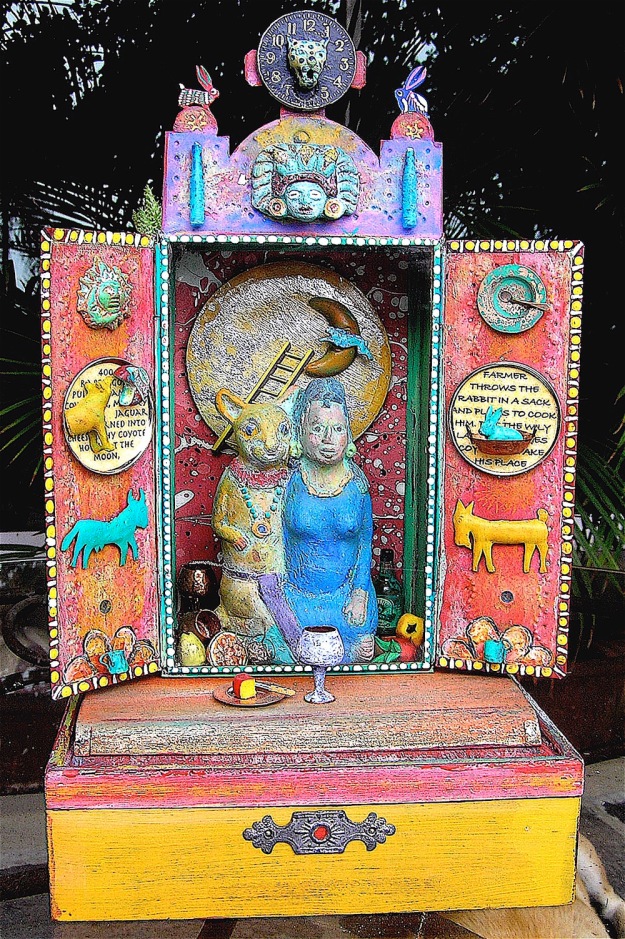Looking through my photos to try to find something appropriate for the Chai (Life) prompt, and yet also thinking I wanted to find something for Nan, I came upon these pictures of Aztec dancers who were dancing in the Ajiic plaza right outside the cultural center where we had the dance performance for the second Camp Estrella group. At the end of their performance, I heard the loud drumming and went out to find what I judged to be a thunderbird dance. Certainly, this dancer looked like a thunderbird. Growing up in South Dakota, I was very familiar with this Sioux symbol of thunder and lightning and rain, but I was a bit confused about why they would be executing a North American indigenous dance.
It was only later, while editing, that I realized that it was not in fact a thunderbird, but rather a white owl, which can be seen very clearly from this front view.
I then remembered how I was kept awake last night by the very loud hooting of an owl, which reminded me of the white owl who had swooped down over my yard on three different occasions the last time my friend Patty visited me. She had seen it twice at night and was afraid I wouldn’t believe her until finally, one night, he appeared while I was outside as well. Then, the entire theme finally came together for me. Legend has it that when you hear an owl call, someone near to you will be leaving this plane.
I also love it that in the above picture, one of our camp participants is standing above the dancers in his own mask, made in the camp. It is on top of his head.
And so Marilyn and Garry, here for you is the white owl that called Nan’s name. I hope you soon find peace in remembering what a wonderful life you shared with each other and in remembering what the owl teaches us: that death is just a part of life and that without it there could in fact be no life. Somehow the only way we ever seem to be able to try to comfort each other is in stating the obvious.
http://teepee12.com/2015/08/12/serendipity-photo-prompt-2015-18-chai-081215/




